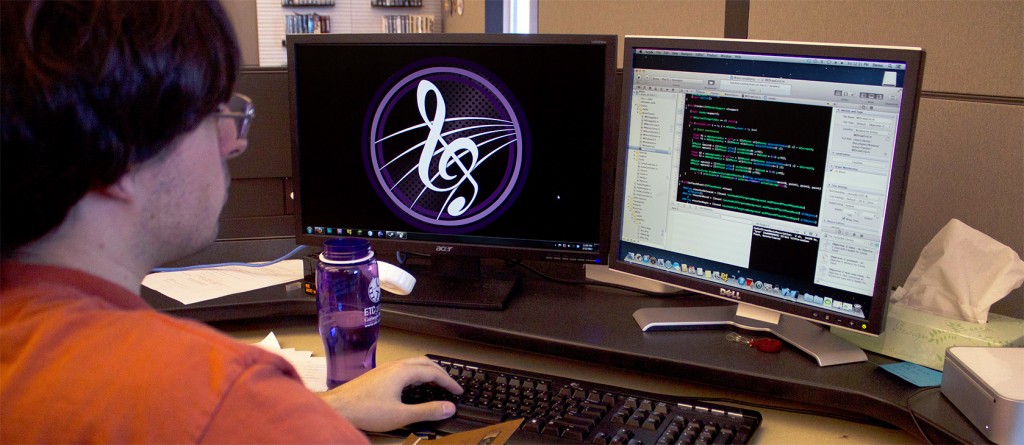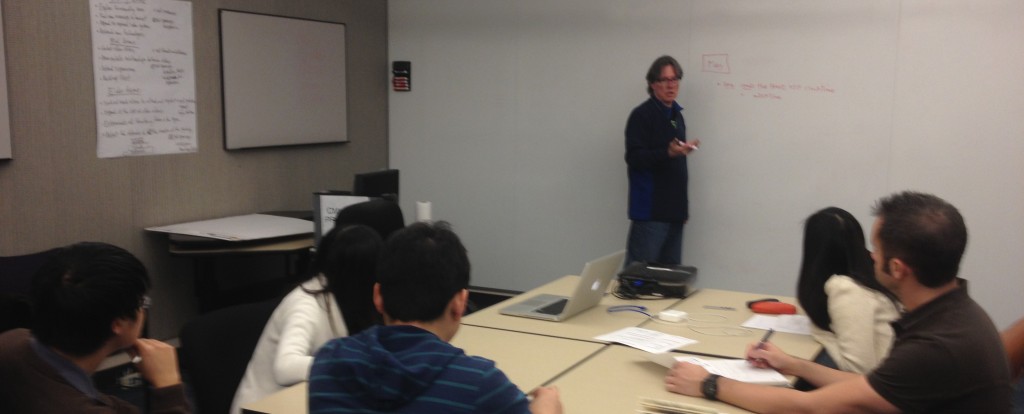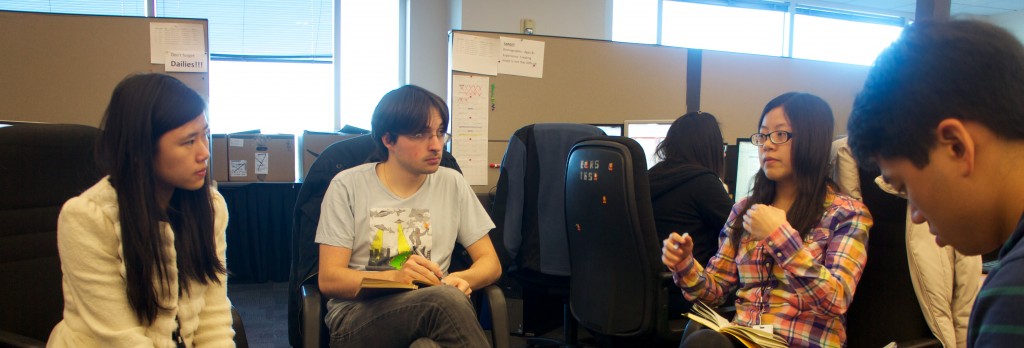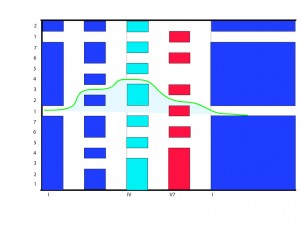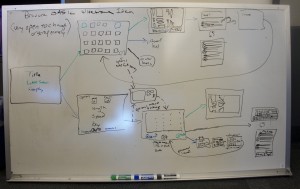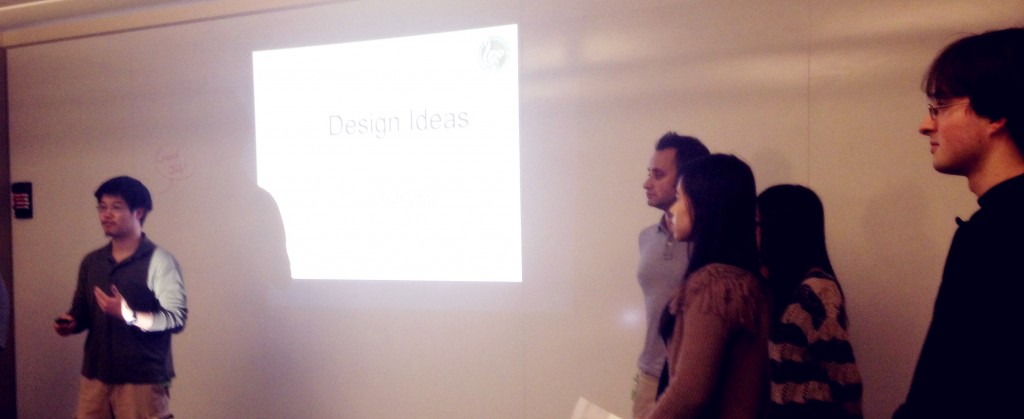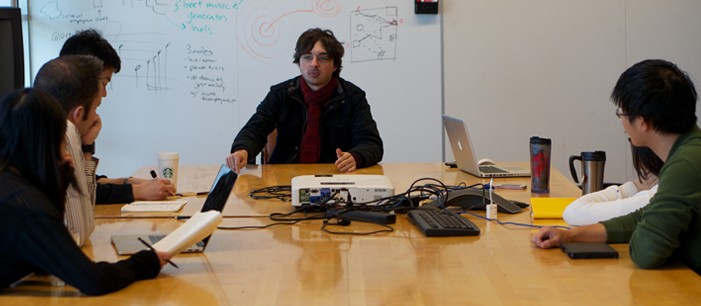
Putting Things Together
Our steady progress is paying off in visible and exciting ways: we have art assets to iterate on, different parts of the programming framework are working, and our basic interaction is running on the iPad. Most of all, though, is that we have begun integrating all of these to build the complete experience.
Design
Last Friday, Nate, Cheng, and Romain met with Jiyoung to discuss the preferred musical style for our app; they settled on a classically-influenced and approachable pop style. With this decision, we have been able to make amount more forwards progress: Now, the programmers have a sense of what instruments our sequencer needs – for our style, those would be piano, patch strings, bass, drums. More so, Nate now knows what types of design to give our “levels”, and he has already started creating some level prototypes that Meng has begun to lay out.
Art
We have iterated on art, and have designs that we like aesthetically. A picture of a potential level layout in our art style can be seen above. We hope to create a visually simple universe, while allowing each chord structure to still keep its own unique aesthetic. Moreover, we are still iterating to make sure that the right parts draw the player’s attention (i.e. the little people that need to be picked up).
From a technical angle, we’ve also begun addressing questions about how to make sure the art intimately connects to the music and programmatic framework in the background. We are investigating how to allow levels be procedurally generated based on music data while still keeping artistic flair and variety amongst similar chords. At the moment, we like the idea of using a system of layers and building tiles that can be procedurally stacked and rearranged.
Tech
The tech prototype is a sight to see, and almost a sight that’s ready for our playtesters to see.
Cheng has built our own file system for storing data now, and moreover, the sequencer that Mike and Pei-Lin having been working on is playing those sounds at the correct tempo. Romain’s framework for drawing lines on screen now has “hit areas” for playable notes. And Cheng is integrating voice input/processing into the project, though that is something we will not be testing just yet.
While the team is excited to see our work in one piece, we are also aware of what is still incomplete at the moment: Our engine is not yet able to handle and construct with our visual elements so we will be testing our prototype over a large pre-made image of a musical level. Moreover, we are still only testing our mechanic and aesthetic, and have yet to begin designing the user interface. However, these are all things that the team is confident in being able to achieve once we know that the foundation of the experience is solid.
Looking Forwards
We will have an internal playtest next week on Monday with our fellow Silicon Valley ETCers to hear their professional feedback about our design. Nate has also been speaking with a local school, and we hope to test with young kids as well in the near future. In response to this feedback, we will continue refining our design next week in preparation for Half-Semester presentations.

